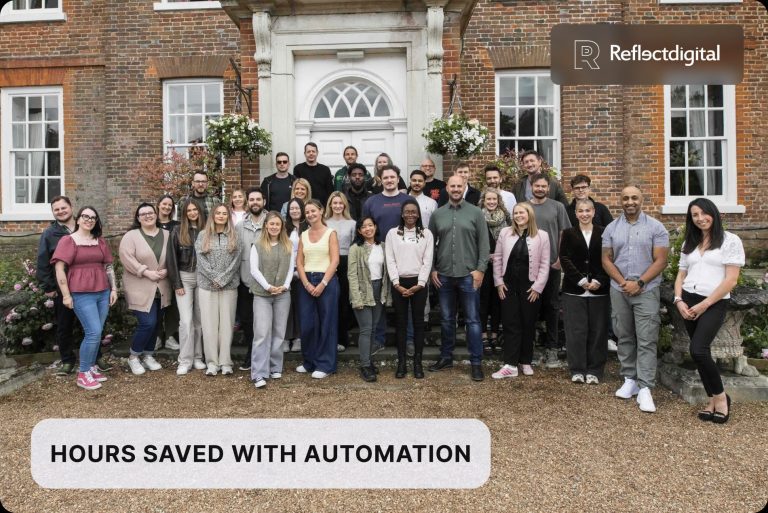Customer-Centric Marketing, Powered by Productive: Reflect Digital’s Story
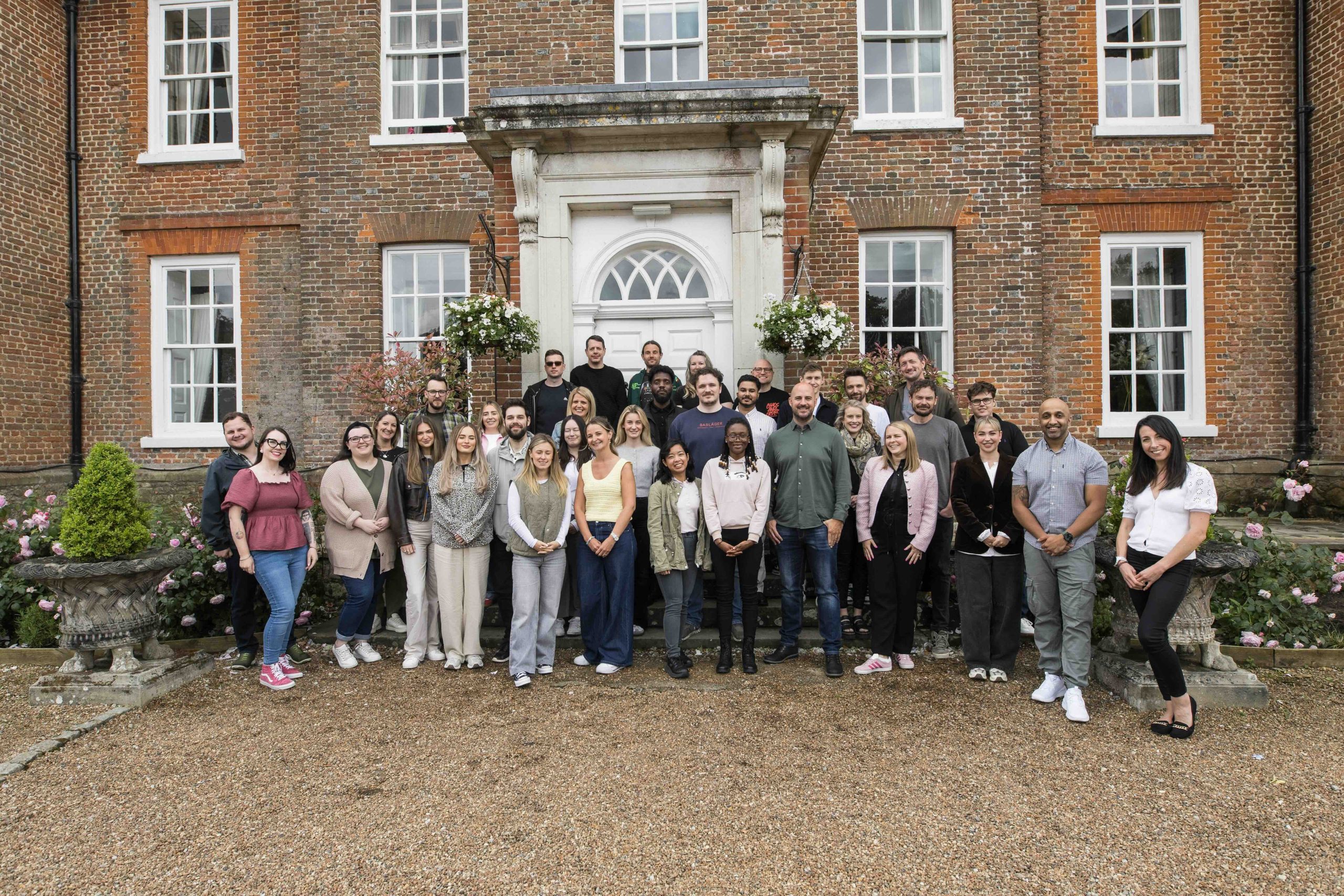
Reflect Digital is the digital marketing agency your customers will thank you for hiring. Part of The Human First Collective alongside LAB, Freestyle, and Aspiration Digital, the agency partners with ambitious global brands and eCommerce businesses to elevate their marketing through true customer centricity. By combining human insights with psychological nudges, Reflect Digital helps clients optimize strategies, unleash digital performance, and drive measurable revenue growth.
We spoke with Helen Wheeler, Delivery Manager at Reflect Digital, about how her team uses Productive to manage resources, streamline operations, and unlock efficiencies across the agency.
We Help Your Agency Reach New Heights
Switch from multiple tools and spreadsheets to one scalable agency management system.
Could you tell us a little bit about Reflect Digital and your role within the company?
Reflect Digital is a performance marketing agency and part of the Human First Collective, alongside our agencies, including LAB, a digital experience and technology agency, and the recently acquired digital transformation agency, Freestyle. Together, we work across a wide range of clients and sectors, with a particular focus on travel and tourism, hospitality, and property. I work as a Delivery Manager, which is heavily operations-focused. I spend a significant amount of time in Productive, monitoring resourcing and utilization across the business, as well as managing budgets and various project management tasks. In essence, I oversee day-to-day operations to ensure everything runs smoothly across departments and projects.
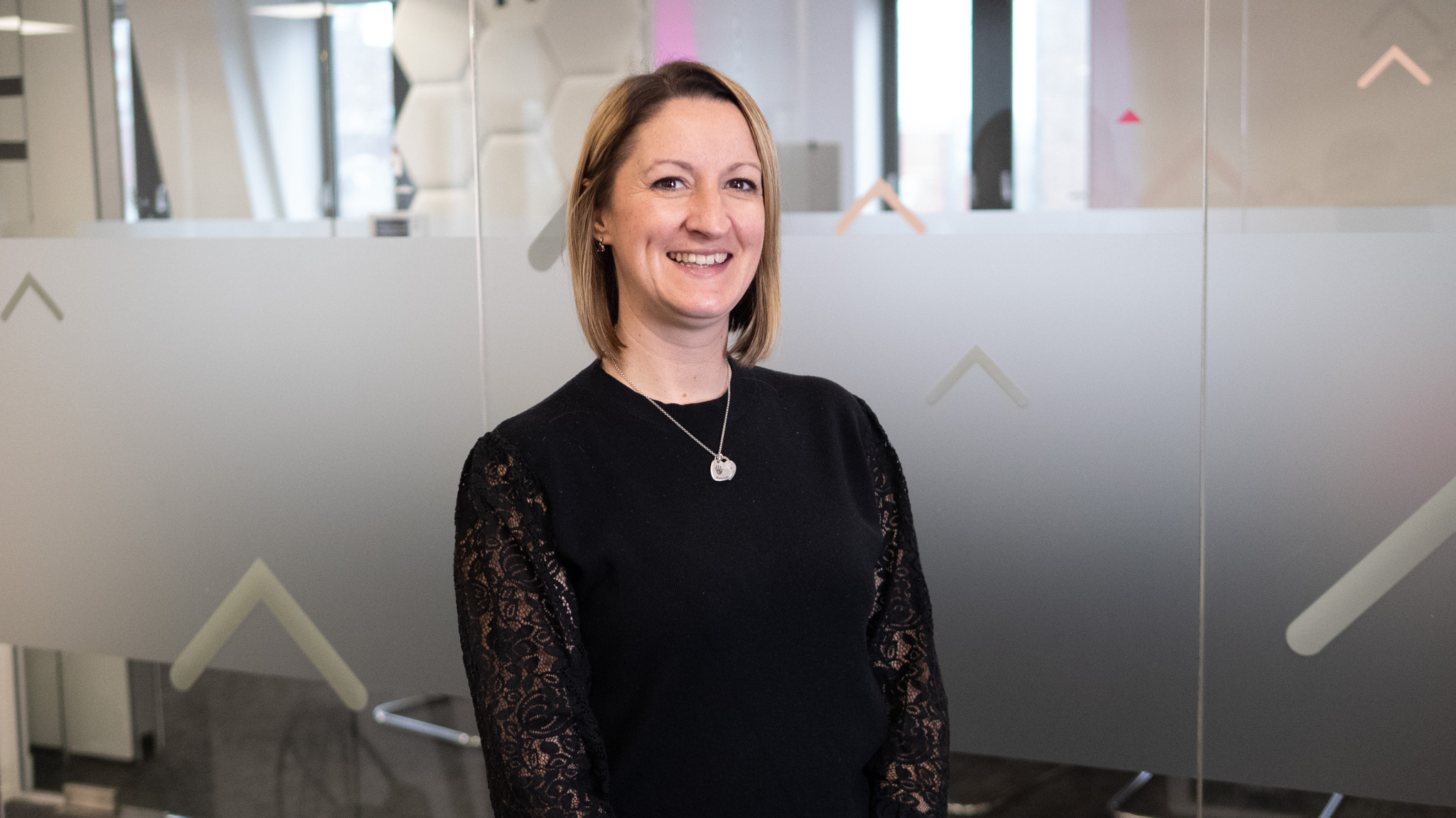
“We manage everything through Productive, from projects, budgets, and resourcing to task scheduling, timesheets, and reporting. That means not just treating it as a time tracker or project tool, but making it the backbone of our operations.”
How has your use of Productive evolved over time?
Reflect Digital has been using Productive for some time, and in my just under a year here, I’ve already noticed how much more integral it has become to our day-to-day operations. Earlier this year, we began using features such as AI reporting and automations. The AI side, especially in reporting, has been a learning curve, but as a business, we’re very forward-thinking when it comes to AI, so it’s exciting to explore how that can enhance our decision-making.
Automations are another area we’ve only just started tapping into, but they’ve already proven to be a real game-changer. Setting up task descriptions to automatically populate based on tags may seem minor, but it streamlines workflows and ensures consistency across the team. I can see us using automations more and more, especially for deals, where tasks could be automatically created at specific stages of the pipeline.
Beyond new features, our general usage has deepened too. My philosophy is that if you’re going to invest in a system like Productive, you should use it to its full potential. We manage everything through Productive, from projects, budgets, and resourcing to task scheduling, timesheets, and reporting. That means not just treating it as a time tracker or project tool, but making it the backbone of our operations.
What pain points has Productive solved for you?
The biggest one is definitely consolidation. Instead of juggling multiple tools and trying to get them to communicate with each other, we can run the full project lifecycle all in one place, from the initial call with a prospect through to delivery and reporting. That alone saves a considerable amount of effort and reduces the chance of things slipping through the cracks.
Tasks being inside Productive have also been a significant benefit. It means we don’t have to switch between project management tools and to-do lists; everything lives in the same system. Another big advantage is being able to customise tasks with custom fields, which lets us adapt workflows precisely to our teams’ needs.
Reporting is another area where Productive has resolved many issues for our business. We can pull reports on utilization, profitability, or project performance in ways that actually support decision-making. Once they’re in place, the insights are really powerful, and I’m particularly interested in Polaris because it allows us to combine different datasets into more advanced reports, something that was never easy to achieve before.
How was your onboarding onto Productive?
Initially, I gained a lot of knowledge through our own training manuals and by exploring the system myself. I also connected with Natasha, our success manager, quite early on, and then had a quarterly review soon after. Those regular touchpoints have been really helpful, especially in the beginning, whilst I was still getting my bearings. Productive is intuitive, so it didn’t take long to get comfortable using it. I value the fact that there are multiple ways to approach tasks, and we’ve kept quarterly reviews in place to check in, learn about new features, and make sure we’re getting the most out of the tool.
What’s your favorite feature in Productive?
I would have said the resource planner, because that’s where I spend most of my time. I love how customizable it is, how you can save different views, and how it gives you just the right amount of information. Since setting up my first automation, it’s quickly become a favourite feature. It feels smart, and I can already see the time savings it brings. For instance, we’ve automated task descriptions based on tags, so the correct template is always pre-filled for the team. It’s a simple change, but it makes a big impact, and I can see real potential to expand this into deals and other areas.
“Without Productive, we’d be less efficient, under more pressure, and more prone to mistakes. Honestly, as a business, we’d really feel its absence.”
How would you feel if you didn’t have Productive?
It would feel like going back to spreadsheets, and no one wants that. Spreadsheets are often confusing, error-prone, and a nightmare to keep up to date. Productive gives us a clear “source of truth” that we rely on. I’ve used other systems in the past that cost more and did less, so I really appreciate how well Productive works. Even timesheets, something people usually dread, are now easier thanks to Google Calendar integration, which has completely transformed adoption for us. Without Productive, we’d be less efficient, under more pressure, and more prone to mistakes. Honestly, as a business, we’d really feel its absence.
Achieve Your Agency’s True Potential
Switch from multiple tools and spreadsheets to one scalable agency management system.
More stories
Powering Global Growth with Productive: How PIABO Communications Streamlined Operations Across Regions

PIABO Communications is Europe’s leading communications agency for tech-driven innovation, supporting some of the world’s most forward-thinking companies. Headquartered in Berlin, PIABO offers a comprehensive suite of services—from PR and social media to brand strategy and influencer programs—across various industries, including AI, fintech, deeptech, and greentech.
We spoke with Johanna Broese, Head of Business Operations at PIABO, about how the agency is using Productive to streamline internal processes, support international growth, and gain real-time visibility into project and team performance.
We Help Your Agency Reach New Heights
Switch from multiple tools and spreadsheets to one scalable agency management system.
Could you tell us a bit about PIABO and your role?
PIABO Communications, based in Berlin, Hamburg, Munich, Paris, and Singapore, is Europe’s leading communications agency and growth platform for the world’s most innovative companies. PIABO achieves outstanding international visibility for businesses in sectors such as e-commerce, traveltech, fintech, foodtech, HR tech, healthtech, blockchain/web3, consumer electronics, IoT, artificial intelligence, cybersecurity, AR/VR, deeptech, SaaS/cloud, and greentech—supported by strategic venture capital expertise across all tech verticals.
Their multidisciplinary consulting teams offer services that include public relations, social media, brand strategy, content marketing, and influencer programs. PIABO is led by Founder and CEO Tilo Bonow and Managing Director and COO Daniela Harzer, and has been a strategic partner to clients—helping them achieve both local and global growth—since 2006.
The client portfolio includes GitHub, Google, Ledger, Open AI, Sequoia Capital, Shopify, Sojade, and Withings.
As Head of Business Operations, I’m responsible, along with my teams, for all internal processes, including quality assurance and automation. This includes specific tasks such as drawing up customer contracts and offers, capacity planning, and time tracking. I’m also in charge of our IT and Tools Department. We’re currently focused on optimization through AI solutions.

Did you use any tools before Productive?
Before we used Productive, we had a different agency software. While all processes worked relatively well, it was much more cumbersome for individual users, especially when it came to time tracking and capacity planning. We also couldn’t do any analyses or build dashboards.
How did you handle resource planning and profitability tracking before Productive?
We used the same resource planning approach as we do now, but with Productive, the process is much more straightforward and transparent. Previously, we had very limited visibility into our utilization rates; now, it’s easier to identify bottlenecks and spot available capacity.
We were tracking profitability before, but lacked dashboards for deeper analysis. That’s where Productive really stands out. We can now build customized overviews for different stakeholders at a higher level, and the visual display options make the data even more accessible.
Why did you start looking for a new tool?
We experienced significant growth, and our old tool couldn’t keep up with the volume and complexity of our data. It also lacked key analytical features, like dashboards. We needed a solution that was intuitive enough for the entire team to use, but also offered more advanced, visual capabilities, such as dashboards, for our management team.
Productive supports our continued growth. We’ve recently opened two new offices—one in France and one covering the APAC region. We successfully set up these two new regions as subsidiaries within Productive, which worked very well for us.
What benefits did you see once you started using Productive? What were the biggest changes?
We really value the many customizable options in Productive, especially custom fields, and the flexibility to build various dashboards, like those for our deal pipeline or utilization tracking. Capacity planning is now far more transparent. Automations, such as email notifications and Pulse reports, also boost our efficiency and streamline our workflows.
Productive has been instrumental in supporting our continued growth. We’ve recently opened two new offices, one in France and one for the APAC region, and successfully set them up as subsidiaries within the platform, which worked seamlessly.
Thanks to Productive, we now have faster, more detailed, and more comprehensive project control. This helps us better understand and manage customer projects and pinpoint key operational levers for improvement.
How much easier is your job since switching? Do you have a favorite feature?
Much easier. Our consultants are very happy with the time tracking feature and love the calendar integration. Department heads now have a clear overview of time off. Our finance team sees all profitability data, and management receives all relevant information through dashboards and Pulse reports.
I’d say my favorite features are the dashboards and automations; they offer so many useful configuration options. Both have been a big support in streamlining our work and improving overall efficiency.
What was the onboarding experience like?
The onboarding process was very well-structured and organized. In the first few months—and still today—we receive support quickly, and there’s rarely a challenge that isn’t resolved.
Of course, internal resources are necessary for such a transition. All data must be prepared, and employees must be trained. However, we had sufficient lead time, so we were well-prepared and able to adhere to the timeline.
Your support is also excellent. Tutorials are available, tickets are answered quickly, and our dedicated contact person is always there for us. The quarterly reviews are especially helpful, giving us an overview of our usage, available features, and upcoming developments.
Productive is the heart of our data. It’s where we maintain all relevant client and project information. It’s always impressive how quickly we can answer questions from management or employees.
How would you feel if you didn’t have Productive?
Productive is the heart of our data. It’s where we maintain all relevant client and project information. It’s always impressive how quickly we can answer questions from management or employees. Without Productive, we wouldn’t have such a firm overview of everything.
Achieve Your Agency’s True Potential
Switch from multiple tools and spreadsheets to one scalable agency management system.
More stories
One Tool, Multiple Businesses: Capptoo’s Path to Smarter Project Management

Capptoo is a 360𐩑 agency providing digital solutions and offering a wide range of services, focusing on improving customer experiences, turning touchpoints into conversions, and improving digital presence.
Behind the agency is a dynamic and highly motivated team with experts in strategy and business consulting, digital marketing, software development, and design.
We spoke with Dejan Dragašević, COO at Capptoo about how Productive helped Capptoo centralize its operations, gain real-time visibility into budgets and profitability, and save time spent on reporting.
We Help Your Agency Reach New Heights
Switch from multiple tools and spreadsheets to one scalable agency management system.
Tell us a bit about Capptoo and your role.
We’re based in Switzerland, but we primarily serve clients in Europe and have begun expanding into the U.S. Our clients come from diverse industries, with a strong focus on the pharmaceutical and life sciences sectors.
As the Chief Operating Officer for our group of companies, I oversee day-to-day operations, ensuring everything runs smoothly across our various segments, and drive strategic decisions, particularly regarding the tools and platforms we use internally.
We operate across four main business segments. One of them is Screver, a cutting-edge AI feedback management platform that empowers businesses to unlock the full potential of feedback, transforming it into the cornerstone of continuous improvement and sustainable growth. Our vision is to redefine how organizations engage with feedback by setting new standards in Voice of Customer & Employee solutions.
The second segment is what you’d call a typical digital agency: providing digital solutions to solve challenges and pain points innovatively through the complete project life cycle (from ideation workshops and strategic planning to the coordination and execution part). The third pillar is similar, but tailored to the pharmaceutical industry, a highly regulated field. We specialize in working with their unique systems and tools, delivering high-impact, innovative, and data-driven projects that break pharma industry records and benchmarks while maintaining compliance.
The fourth segment is Oncology Compass – a platform we co-developed with a major pharma company—it’s designed to help oncologists stay up to date with practice-changing publications by filtering out the noise. In addition to that, we’re soon launching a new CRM platform targeting the U.S. market, starting with the dance and fitness industry.

What were operations, sales, and project management like before?
In the early days, we relied heavily on Google Sheets and Trello. Trello was very basic at the time—just cards moving left and right. It worked when we were small, but as we started handling more projects and grew, we needed something much more robust.
We later moved to Jira, which was a step up in terms of functionality, but it wasn’t very user-friendly. It was complex and became expensive quickly once we started adding the necessary plug-ins.
We didn’t have a proper resource planning module in Jira, so we ended up using Google Sheets again. We exported hours from Jira, reviewed historical data, and used formulas to attempt to forecast future capacity. It was a bit clunky and time-consuming, but it was all we had.
Did you have a profitability overview or reports that showed your utilization rates?
As this is an important part in understanding how a company operates and making decisions, we did have it, but we just had to invest some effort in getting it done. To get any financial overview, we had to export everything manually into spreadsheets. Then we’d plug in our rate cards, which varied from person to person depending on the service or project. It became very complex, very fast. So while we had a system, it wasn’t efficient or scalable.
Why did you start looking for a new tool?
One of the primary challenges we faced was the lack of effective reporting and budgeting capabilities. While Jira offered some reporting functionality, the absence of integrated financial data rendered it inadequate for our needs. Budget tracking was equally problematic, which, of course, created significant difficulties for our project managers and hindered effective financial oversight.
We were looking for a tool that could combine project management with time tracking, budgeting, resourcing, time-off management, documentation, and reporting—all in one place. We were tired of switching between tools and manually syncing data. Ideally, we wanted a system that would save us time, reduce human error, and give us real-time visibility into what was happening across the business.
We saw that the time saved on reporting alone was huge. I’d estimate a 50% reduction in time spent on some reporting tasks.
What benefits did you see once you started using Productive? What were the biggest changes?
The biggest benefit was how much easier life became for our project managers. They no longer had to waste time in Excel calculating budgets or manually compiling reports. Everything is in one place—budgets, time tracking, rates, and profitability. Reporting became much more accurate and much less time-consuming. I find having financial visibility and a real-time overview of profitability across dozens of projects to be invaluable.
My job has gotten a lot easier as well. Especially when it comes to tracking performance and managing the business as a whole. I no longer have to dig through spreadsheets to get a picture of how we’re doing financially or operationally. It’s all right there in Productive. I also appreciate the flexibility. It works well even for a multi-company setup like ours.
We saw that the time saved on reporting alone was huge. I’d estimate a 50% reduction in time spent on some reporting tasks. That’s because we have so many projects, clients, and internal initiatives across our different business units and companies, and we send and use reports regularly. Before, every single report had to be built manually, with data exported and formatted in multiple tools. Now it’s automated or at least significantly streamlined. That’s been a game changer for us.
Do you have a favorite feature in Productive?
It’s hard to pick just one because the biggest value is in the combination of everything. Having project management, budgeting, time tracking, sales, and reporting all integrated is the real win. However, if I had to choose, I’d say that real-time budget tracking, resource planning, and reporting are the features I rely on the most.
Productive has brought structure and clarity to our operations, and I can’t imagine working without it now.
How would you feel if you didn’t have Productive?
Depressed. Seriously. Going back to how we used to work—with 10 different tools, endless spreadsheets, and disconnected systems – would be really difficult. Productive has brought structure and clarity to our operations, and I can’t imagine working without it now.
Achieve Your Agency’s True Potential
Switch from multiple tools and spreadsheets to one scalable agency management system.
More stories
From Fragmented Tools to Full Control: How wild Streamlined Operations with Productive

A Vienna-based digital agency, wild has a strong background in design and development. Over the past 12 years, they’ve worked on cutting-edge tech, AI, healthcare, and finance projects, collaborating with enterprise clients to build innovative digital experiences.
Financial reporting and operational efficiency became critical as they scaled and became part of the creative network Residence. Their existing setup—spread across multiple tools—made getting precise insights into profitability, forecasting, and resource planning challenging.
We spoke with Thomas Lichtblau, one of wild’s founders, about their decision to switch to Productive and how it has transformed how they run their agency.
We Help Your Agency Reach New Heights
Switch from multiple tools and spreadsheets to one scalable agency management system.
Can you tell us a bit about wild and your role?
The agency was founded nearly 12 years ago in Vienna, Austria. We’ve been operating entirely remotely for the last four or five years. We have around 30 full-time employees, plus a few freelancers who work with us regularly. We don’t focus on one specific market, but we’ve developed more profound expertise in certain industries over time.
We work a lot in tech, both software and hardware. Given our background in design and development, we’ve been involved in many AI projects, including working with AI companies that develop large language models (LLMs) and building AI-powered internal tools for enterprises. We also do a lot of prototyping.
Beyond tech, we have significant experience in healthcare, wellness, and finance, particularly in the FinTech space. However, we tend to work more with enterprise-level clients rather than startups. We also occasionally collaborate with mid-sized and local businesses.
I’m one of the founders of wild. My background is in design, and I’ve always led on the visual side. However, my role has shifted in the last few years as we’ve grown. I’ve been moving away from client work and focusing more on internal processes and workflows. My main goal is to free up time for our designers and developers so they can focus on creative work rather than administrative tasks.
In 2023, we joined Residence, an interdisciplinary network helping innovative, creative talent grow and thrive across art, business, and culture. That’s been an important factor in how we’ve evolved, including our decision to switch to Productive.

How did your setup look before you switched to Productive?
Before Productive, we had a setup that worked, but it wasn’t as efficient as now. We relied on multiple tools for different tasks:
- Task management: Notion
- Time tracking: Harvest
- Resource planning: Forecast
- Finance and invoicing: Xero
- Documentation: Notion
We had a high-level finance and profitability overview, but it wasn’t as accurate as now. Our data wasn’t as precise, so our reports weren’t as insightful. Things like deal forecasting, budget forecasting, and tracking billable versus non-billable hours weren’t as clear as they are now with Productive.
People no longer have to switch between multiple tools, and we don’t encounter issues where an update in one tool causes a problem in another. Everything is in one place now, which has made a huge difference. I can confidently say that the work required for financial reporting has been significantly reduced.
Why did you decide to switch tools?
The biggest improvement was in the accuracy of our data, especially at the project level. We now have much better insights into project health, billable vs. non-billable hours, expenses, revenue, and profit forecasting. The Scenario Builder has also been a great addition—it helps us plan project teams and determine if a pitch is worth pursuing.
Since switching, our workflows have become more streamlined. People no longer have to switch between multiple tools, and we don’t encounter issues where an update in one tool causes a problem in another. Everything is in one place now, which has made a huge difference. I can confidently say that the work required for financial reporting has been significantly reduced. It’s also been a big help that our finance team can now take over more of this process.
At a glance, the resource planner provides a snapshot of allocated hours across teams, making it simple to spot and prevent resource gaps.
What’s your favorite feature?
My favorite feature is the reporting. It’s flexible and allows me to generate a wide variety of reports. There are some limitations, but I imagine those will be addressed in future updates. For our project managers, the biggest benefit is how well all the project management tools integrate—it makes everything much more effective.
Chantell, one of our Project Management Leads, said she really likes the resourcing part. As the Project Management Lead, she runs the weekly resource meeting with the wild Project Managers. Productive’s resource planner is central to these meetings and incredibly helpful for resourcing projects and ensuring team members are not overloaded with project work. At a glance, the resource planner provides a snapshot of allocated hours across teams, making it simple to spot and prevent resource gaps.

What was the onboarding process like?
The onboarding process was smooth. We started with a demo and were assigned a dedicated manager who helped us through any questions. I spent the first couple of weeks exploring the tool myself, then a couple of months working with our project management team to get everything set up properly. We also created internal handbooks—one for project managers that goes deeper into financials and budgets and a lighter one for the team that covers things like submitting expenses and tracking time.
One of the best aspects of Productive is the support team. They’re incredibly responsive—I get an answer within minutes whenever I have a question.
How would you feel if you didn’t have Productive?
If Productive were to disappear suddenly, I’d probably have a panic attack. We’ve put much effort into setting it up and making it work for our team. Losing it would mean researching and testing new tools, and I doubt we’d find one that works as well as our current setup. It would be incredibly frustrating.
Achieve Your Agency’s True Potential
Switch from multiple tools and spreadsheets to one scalable agency management system.
More stories
Scaling Smart: How Present Works Transformed Their Agency with Productive

Present Works is a B2B marketing agency focused on brand performance, working across industries such as financial services, software, tech, and consulting. Their philosophy is that being “present” drives results, so they aim to get clients in the right places at the right time with creative content that resonates.
We recently spoke to Ross Francis, Creative Director at Present Works, about how Productive gave them a real-time overview of their business.
We Help Your Agency Reach New Heights
Switch from multiple tools and spreadsheets to one scalable agency management system.
How did you manage work before using Productive?
Before Productive, we used Google Sheets to track and manage projects through Asana, with a bit of Trello for Kanban-style project work. It was fine at first, but as we got bigger, these tools couldn’t keep up with the complexity we were dealing with. We had spreadsheets to manage our finances, but keeping up-to-date with what was happening on the ground was hard. Nothing was automated, so we were constantly updating things manually, which was time-consuming and could easily fall behind reality.
We wanted something that could give us a real-time overview of our whole business and serve as a single source of truth. While exploring options, we came across Productive, and I was immediately drawn to its clean, intuitive interface.
What made you start looking for a new tool?
We’d been running on Asana and spreadsheets for a while, and I started thinking it could be much better. We wanted something that could give us a real-time overview of our whole business and serve as a single source of truth. It was getting to the point where we needed an integrated system that would handle everything from daily task management to high-level forecasting.
While exploring options, we came across Productive, and I was immediately drawn to its clean, intuitive interface. It didn’t take much convincing to see that this was the right platform for us.

What did you implement first in Productive?
We’re rolling it out in phases. First, we got the team used to Productive for briefings and project management. I set everyone up, got them communicating through the platform, and started pushing our project briefs through Productive. From there, we moved on to budgeting and resource planning, which is a game changer. Before, we were planning maybe a month ahead; now, we can plan for the entire year.
The next phases will cover invoicing, CRM functionality, and profitability tracking and reporting. We’re currently in phase three, so we still have much to explore.
We can now see exactly how much time we spend on projects versus what we’re billing, which gives us a clearer picture of where we’re over-servicing or undercharging.
Have you noticed any specific benefits so far?
Definitely. Even in these early stages, it’s already so much easier to track our resources. We can now see exactly how much time we spend on projects versus what we’re billing, which gives us a clearer picture of where we’re over-servicing or undercharging. This insight alone has helped us start having better conversations with clients about project scope and budgeting.

Do you have a favorite feature so far?
I love the flexibility to customize workflows to fit our needs. We wanted a service desk to handle client requests separately from our main projects, so I created a dedicated “Service Desk” project within Productive. Now, clients can submit requests directly, which are automatically formatted to meet our standards. Our project managers get a Slack notification when a request comes in. This setup keeps everything organized, allows clients to see all their requests in one place, and helps us prioritize with them.
It’s been a huge help, both for us and our clients.
How do you see Productive supporting Present Works as you grow?
Right now, Productive is giving us the foundation we need to scale. We’re not using it to its full potential yet, but I know this system will grow with us as we grow. The whole team is getting on board, and using Productive for day-to-day tasks is becoming second nature. We’re building something here that will support our ambitions as we expand, and I’m excited to see where it takes us.
Achieve Your Agency’s True Potential
Switch from multiple tools and spreadsheets to one scalable agency management system.
More stories
How Giraffe Social Optimized Their Resource Planning With Productive

Giraffe Social is a creative agency helping some of the world’s most ambitious brands achieve meaningful results on social media by balancing strategic thinking with creative brilliance and a human-first approach.
We spoke with Kate Webster, Head of Operations at Giraffe, about how Productive helped them optimize their resource planning.
Productive allowed us to bring it all under one umbrella, which means we got a better picture of our business as a whole.
How did you come across Productive?
When I came to the company, we used Asana, which worked well regarding tasks. The thing we found lacking was resourcing. We manually processed our resource allocation, which was time-consuming and opened up more room for error.
We quickly realized that resourcing was becoming a big pain point for us. How do we know how long it will take to deliver this project? It’s just one of many questions we didn’t have an answer for. We integrated EverHour, but the learning curve was too steep, and we had to get the team used to time tracking. So, we decided to start looking for a solution that was an all-in-one tool.
It was unexpected that we managed to find a tool that allowed us to not only manage projects and tasks better but also allocate our resources and get an overview of our profitability. Productive allowed us to bring it all under one umbrella, which means we got a better picture of our business as a whole.
We Help Your Agency Reach New Heights
Switch from multiple tools and spreadsheets to one scalable agency management system.

We love your support team. Our team often comes to me with questions, and it’s really nice knowing I can rely on the support team to get things done. They’re efficient, super friendly, and thorough.
What was the transition like?
Our CEO was the primary driver behind choosing Productive. He did the initial demo and then a demo with the leadership team. We had Bernarda, one of your Business Development Representatives, guide our hands through the entire process. We decided it would probably be best to implement top-down so management would start using the tool first and then drive its usage to other team members.
We onboarded our team to project management first so that they could get comfortable and start exploring other things in the tool.
We love your support team. Our team often comes to me with questions, and it’s really nice knowing I can rely on the support team to get things done. They’re efficient, super friendly, and thorough.

Do you have any favorite features?
I spend a lot of my time in the Resourcing tab. I’m trying to make sure that we’re maximizing billable time, that there’s no underutilization, and that our teams’s time is well spent between client work and internal work. Resourcing in Productive allows me to understand if the team has time to contribute to other things. From the team’s perspective, they have much more clarity about how much time they should spend on clients.
We changed our business model from packages to retainers, and Productive really helped with that. With Productive’s Resourcing, I can be sure that I’m never allocating more work to the team than they can actually do in a week based on working hours.
I feel like once we’ve put enough data into Productive, it’s going to help us strengthen and grow our business in the future.
Achieve Your Agency’s True Potential
Switch from multiple tools and spreadsheets to one scalable agency management system.
More stories
How Prolex Media Made Productive the Backbone of Their Agency Operations

Prolex Media is an award-winning video production agency based out of Winnipeg.
As a group of creatives, they help transform brands into industry leaders through captivating video and scroll-stopping content that creates meaningful connections.
We spoke to Alex Streltsov, General Manager at Prolex Media, about how Productive became the backbone of their agency operations.
What led you to Productive?
When we started out, we decided to go with Trello, and it was a solid tool. Back then it didn’t have many advanced features, but it worked for us for a while. Once we got things rolling at the company, we realized that not having the ability to track time or build budgets was an issue for us.
We decided to switch to Monday.com then and that didn’t go well, so we kept searching and searching, but came up with nothing. At that point I was pretty desperate, to the point that I told our IT guy that we might as well build our own tool that’ll suit the needs of an agency.
Thankfully, we stumbled upon Productive at the right time.
We Help Your Agency Reach New Heights
Switch from multiple tools and spreadsheets to one scalable agency management system.
Which Productive features would you say were most helpful?
I’d say it’s got to be Resourcing and Project Management. Scheduling was a real pain with Monday and Productive made things so much easier, especially since Gantt charts were released. Being able to allocate time per task was a big deal for me since I could finally see how much time each person is spending on a project and how much capacity we have.
Another thing we loved were project templates. Most of our projects are similar and having to write out the entire 150 step process each time we do a new project is just inefficient. With templates we can be sure we have everything we need and that nothing got missed while we were working on the project. Tasks just tie everything together so nicely, there’s a real depth to them. You can turn projects into boards, lists, tasks and it just tickles the right parts of my brain.

The main challenge for us was consolidating everything we needed into one tool, we were using six different tools at the time, and Productive really delivered on that note.
What benefits did you get from using Productive?
It made collaboration a lot easier. There’s no need to ping people and ask for project updates, we can just check what the project status is in Productive and who’s currently working on which task. I don’t have to go around and micro-manage things, I know what’s due and when and I just have to see if it’s finished.
We also love the ability to invite our clients into the projects. It takes the middle man out of the equation, no need to go back and forth via e-mail, we can get all of the feedback within Productive. It’s great to have the ability to have your project managers and clients talk directly and not having to worry about catching up on emails at 8PM. This also let’s the client see how much work is actually going into the project and you can see that they have a greater appreciation for what we do.
I’m very much a numbers guy and seeing all the reports on profitability, capacity and availability helps me figure out what the next logical hire would be, which is huge. Before, I was guessing. I’d feel like we were busy and that would be it—we’re hiring. Now I know if we can afford another staff member, which gaps we’re trying to cover with this hire, and what kind of responsibilities should they have.
The main challenge for us was consolidating everything we needed into one tool. We were using six different tools at the time, and Productive really delivered on that note. You can imagine the amount of time and money we saved when we switched to using just one tool. It also made the onboarding a lot easier, since people didn’t have to bounce around from tool to tool to track time or check budgets.
The onboarding process was probably less complicated than I thought it would be. The whole experience was great, our account manager was fantastic and you Support was terrific and answered questions quickly.
Productive really brought peace of mind, transparency, analytics and easier management of my team.
How would you feel if you didn’t have Productive? Any favorite features for you personally?
I think not being able to rely on Productive would be really frustrating, I would have a lot more questions for my team and would be bugging them more often.
In terms of a favorite feature, I don’t think I can really single anything out. I think for me, what makes Productive great, is the fact that it’s an all-in-one tool. It answers all of my questions and I can do everything within one tool to see how my company’s doing, business-wise. I couldn’t imagine switching to a different tool.
Productive really brought peace of mind, transparency, analytics and easier management of my team.
Achieve Your Agency’s True Potential
Switch from multiple tools and spreadsheets to one scalable agency management system.
More stories
How SOUP Got a Firm Hold on Their Projects Using Productive

SOUP is an independent digital marketing agency based in Sydney, Australia. They’re a team of 13 that carry out innovative, data-driven campaigns that deliver exceptional results. With partners like Google, Bing, LinkedIn, Amazon and Facebook they have a proven track record of delivering solutions with maximum impact.
We spoke with Katya Vakulenko, Founder and CEO of SOUP, about how Productive helped them get a firm hold on their projects.
How did you come across Productive?
I started SOUP back in 2019 and I was a one-woman band for some time. Once I built up a clientele, I started hiring more people. When I was working alone I was using Asana and it worked pretty well for a while, until the work picked up, as well as the number of employees.
We found it really problematic when it came to keeping track of things and having everything in one spot for a client. As we grew, we wanted a solution that would scale better, so we decided to make the move to Productive almost three years ago—and everyone loved it.
We Help Your Agency Reach New Heights
Switch from multiple tools and spreadsheets to one scalable agency management system.
What were the main pain points you wanted to solve?
Since we’re a digital marketing agency, it’s really important for us to have an overview of what people are working on. We work across different channels and we have specialists in each in channel. So if a client comes in and they want to do Google ads, Facebook ads and SEO, you have potentially five or six people working on the same project, but it’s crucial that everyone knows what everyone else is doing. Having the ability to have different statuses, move things around between teams, and have designated projects and documents for each client is terrific.
What I really like about Productive is that it’s not trying to be a tool for everybody. It’s really a tool for agencies.
What do you like the most about Productive? Any specific features you’d single out?
What I really like about Productive is that it’s not trying to be a tool for everybody. It’s really a tool for agencies. And I really like that because some of the pain points that an agency has are not addressed by other tools because it’s not something that is a priority for them.
One of the things that was a game-changer for us was the ability to track time on everything. You can just click into your own, or your colleagues time and see what they have going on.
Having the ability to separate client projects and not having it mix with anything else is really clean. In Projects, you have the ability to add different categories for different services. You can also break down tasks into subtasks and dependencies that are then assigned to different people that need to work on them. I think that kind of workflow is really good.
We also created our own project statuses: to do, in progress, pending internal approval or pending client approval. This makes communication so much easier because you don’t have to ping the person and ask for the status update. I think we’ve definitely saved a lot of time, in just not asking each other where people are at with their work. Probably more than half an hour each day.
Productive is very intuitive and simple to get on top of. I can’t imagine moving away from it
How would you say the learning curve was? How would you feel if you didn’t have Productive?
I don’t think the team had any difficulties with the adoption of Productive everything was super straightforward. The onboarding took a week or two, where we did a few training sessions and just kind of got going with it. The whole migration process was simple and the tool didn’t feel clunky at all.
Productive is very intuitive and simple to get on top of. I can’t imagine moving away from it. Someone tried to pitch to us to move to another tool and I said to them something along the lines of: “I’m sorry, but I don’t think I’m able to, the tool is so ingrained in our agency operations and there’s a chance my team might try and kill me if we switch.”
Achieve Your Agency’s True Potential
Switch from multiple tools and spreadsheets to one scalable agency management system.
More stories
How Etch Saved Time Getting Data Reports In Productive
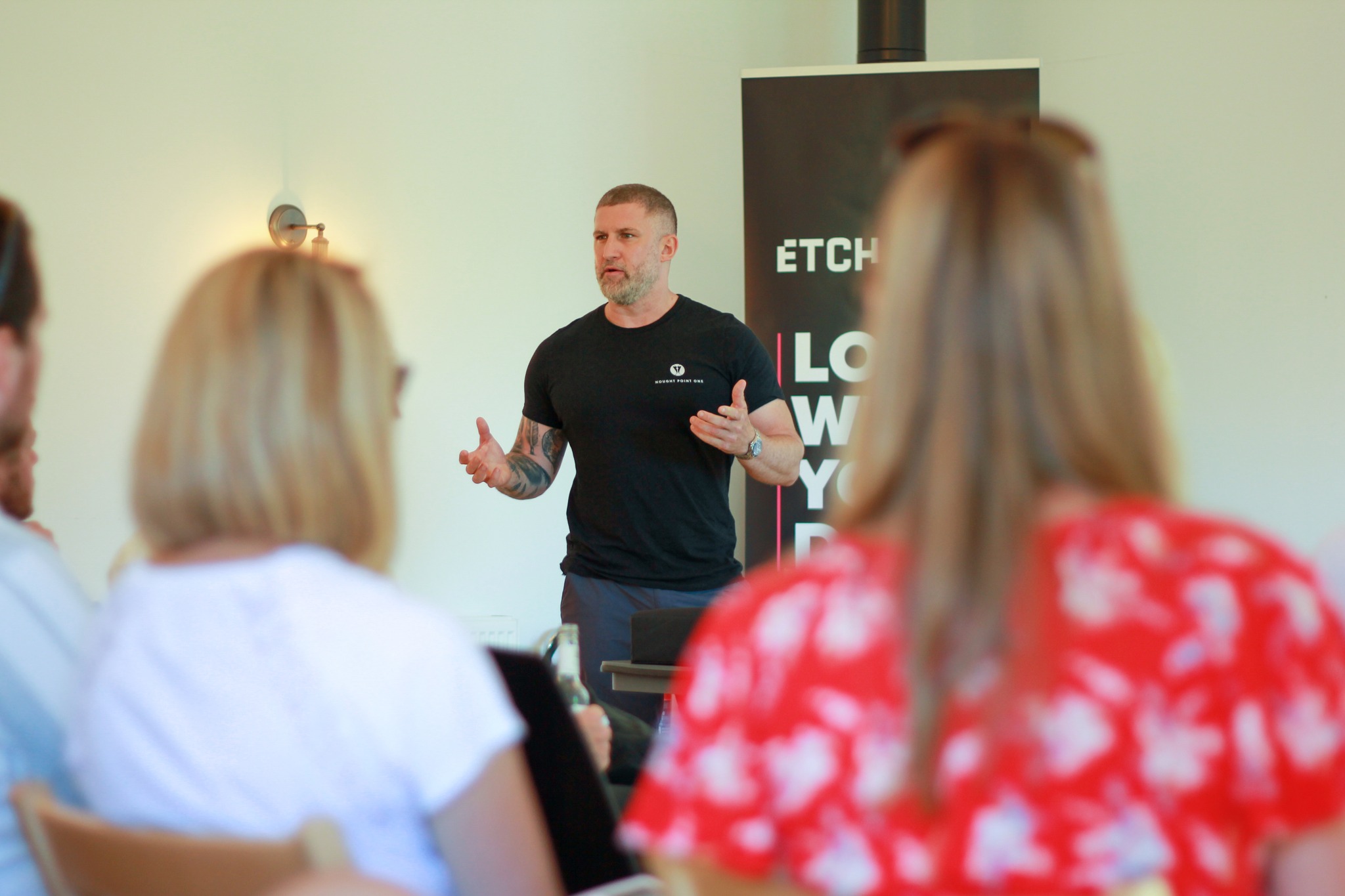
Etch is a digital customer experience consultancy whose main goal is to help organizations innovate their digital customer experience. From building, through to marketing and continuous improvement strategy—their clients include companies like Uber, British Airways, WWF and Maserati.
We spoke with Etch’s Finance Manager, Helen Mutch and Head of Commercial, Emma Smethurst about how Productive helped them save time on getting data reports and improve company-wide budgeting.
Can you tell us more about your roles at Etch?
Emma: Both of us sit in the Commercial team, so we’re responsible for looking at the efficiencies, the numbers, the data, and everything across the business—and trying to see what triggers and influences our lever.
The role of Head of Commercial is focused on operations, and part of that is finding the right tools that can help the team be more efficient—from time tracking, through task management, to just having better visibility of a client budget.
Helen: The role of the Finance Manager is more number-based, but there’s a lot of crossover with Operations. That was one of the main reasons we moved to Productive: to have this one source of truth across the business.
Achieve Your Agency’s True Potential
Switch from multiple tools and spreadsheets to one scalable agency management system.
We Help Your Agency Reach New Heights
Switch from multiple tools and spreadsheets to one scalable agency management system.
“The role of the Finance Manager is more number-based, but there’s a lot of crossover with Operations. That was one of the main reasons we moved to Productive: to have this one source of truth across the business.”
How was the learning curve for both you and your team members? Would you say that Productive is intuitive from a UX perspective?
Emma: We got positive feedback almost immediately after implementing Productive. Unlike tools that we’ve used in the past, Productive was intuitive and the onboarding process was quicker than we expected. We got really comfortable with it because everyone looks at it on a daily basis. Everyone is in love with it, even more so than we’ve expected.
We had a Productive clinic set up for the first 6 weeks, where people could drop by once a week and ask questions. There were people coming for the first couple of weeks, but that dropped really quickly because they got the hang of it on their own, which wasn’t the case with our previous systems.
“The support team are brilliant. Really quick. With the tools we used previously, it took three or four days to get a response. They never knew what you were asking.”
How was the onboarding training? Would that be something you recommend?
Emma: Yeah, absolutely. I would say the investment we made upfront—having the sessions and you guys helping us onboard—got us to where we needed to be much more quickly than if we hadn’t done it. That has helped massively. We went live the 1st of May, and I think we’d sorted any niggles out by the end of the June.

In your opinion, what are the game-changing features of Productive?
Emma: From a Commercial team perspective, the struggle was mostly task management. Now, in Productive, we’ve got various business projects set up where we have all our tasks and we can see progress and communicate. So that’s been a real game-changer as opposed to people using different tools which caused a lack of clarity.
Helen: Reports were a big thing for us as well. We have a colleague who manages a really big client of ours. We’d always have to chase her for reports before the monthly meetings and she wouldn’t be ready to send them. After we implemented Productive, the tables turned—now she’s chasing us for our part, because we’ve got all of the reports set up and ready in Productive.
“There are things that took around 10 hours before Productive—now take around 1 hour, or even less in some cases.”
What about the control over profit margins on your projects? Did you see any improvements in that area?
Helen: We definitely didn’t track profitability by client before. We could only do it by day rate and make an assumption on that day rate, and it would be recognized income divided by however many hours delivered.
We can easily track profitability now because we’ve got all of the rates in one place. We could have tracked it before, but there would have been so many errors exporting it all out.
Emma: So, we actually benefit even more now because we get more contractors to do fixed-price work. Obviously, there are potential savings there if there’s an over-burn on their part.
We’ve set the minimum margin for markups and everything within the system, so they can only put in costs at a certain margin, which means we know that it’s pretty much guaranteed that we’ll recover the margin on top of any contractor costs.
Helen: We had no over-burn in January of this year, which we’d almost never had before. So generally speaking, we are more profitable.
How happy are you with the way Productive has developed since you started using it?
Emma: So, you said the HubSpot integration would happen, that’s happened, the Docs would happen—that’s happened. Plus, there have been lots of other little fixes that have made life easier.
We can see that you’re listening to customers and making the changes, no matter how small they might be.
Achieve Your Agency’s True Potential
Switch from multiple tools and spreadsheets to one scalable agency management system.
More stories
BICG Now Has a 360-Degree View of Business Operations

We Help Your Agency Reach New Heights
Switch from multiple tools and spreadsheets to one scalable agency management system.
The Business Innovation Consulting Group (BICG) designs new work solutions and strategies to help companies improve their internal work processes. With offices in Spain, Germany, France and Mexico, BICG caters to companies all over the globe. For almost three years now, they’ve been using Productive as their main business management tool. We visited their HQ in Madrid to talk about their experience with Productive and how it’s supported their growth.
What did you want to change at BICG when you were looking for a new business management tool?
Joaquín D., CTO: We wanted to improve the work that we were already doing, the internal processes that were already taking place. We were looking for a tool that would let us easily track the time we dedicated to each project, that would let us organize tasks within each project, without being complex, and that would help us foresee the future: the workload that we would have in a few months. It also had to be a tool and a supplier that we trusted.
Carlos L., Managing Director: We were searching across the globe for different sorts of solutions and we came across Productive, and it has really been a very significant game-changer for us. There’s a before and after since we have been using Productive.
Optimize Operations With Productive
Switch from multiple tools and spreadsheets to one scalable professional services platform.
How has time tracking and scheduling improved?
Joaquin D., CTO: It’s easier to track time when working on projects if I can better coordinate my team’s tasks with the rest of the organization.
Stephan O., Manager: We go through our team and see our workload for the next week or even for the next month, or for the next three months, and then we can schedule our people accordingly. Before we had a lot of Excel sheets, or people were doing this in PowerPoint or Word. They were not in one place and data wasn’t extractable from one place.
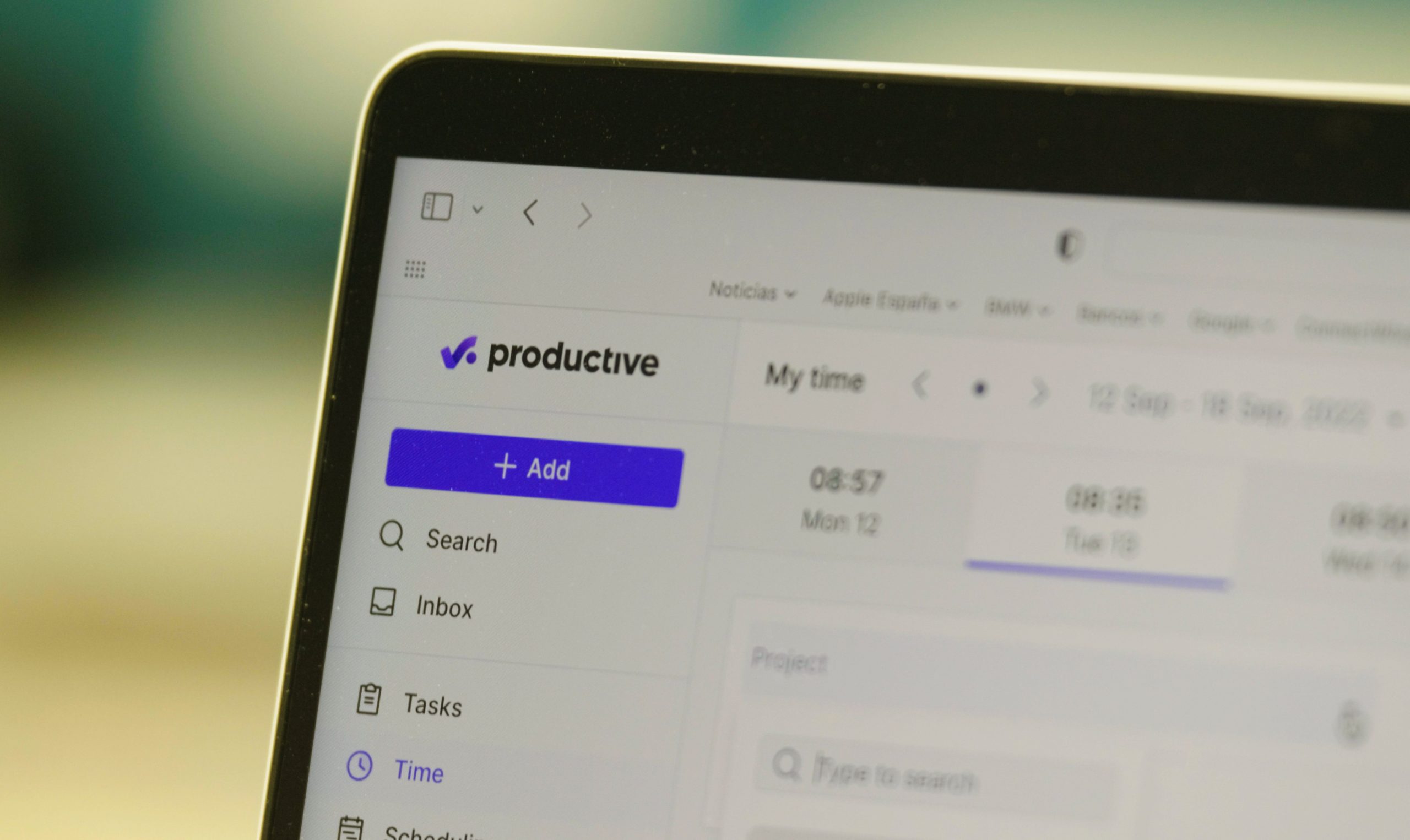
“Without a doubt, in the billing area there has been considerable change. I can say that the hours we dedicate have been reduced in a 15-20%.“
Can you tell us about the financial aspect of running all your work in Productive?
Ana G., Executive Financial Officer: I can safely say that finance and administration is one of the areas that has experimented the biggest change since the implementation of Productive.
The improvement in the efficiency of the processes and the even greater knowledge of our business is clear if you also take into account that you can treat each client, even each project from a client, as an independent unit of profitability.
Without a doubt, in the billing area there has been considerable change. I can say that the hours we dedicate have been reduced in a 15-20%.
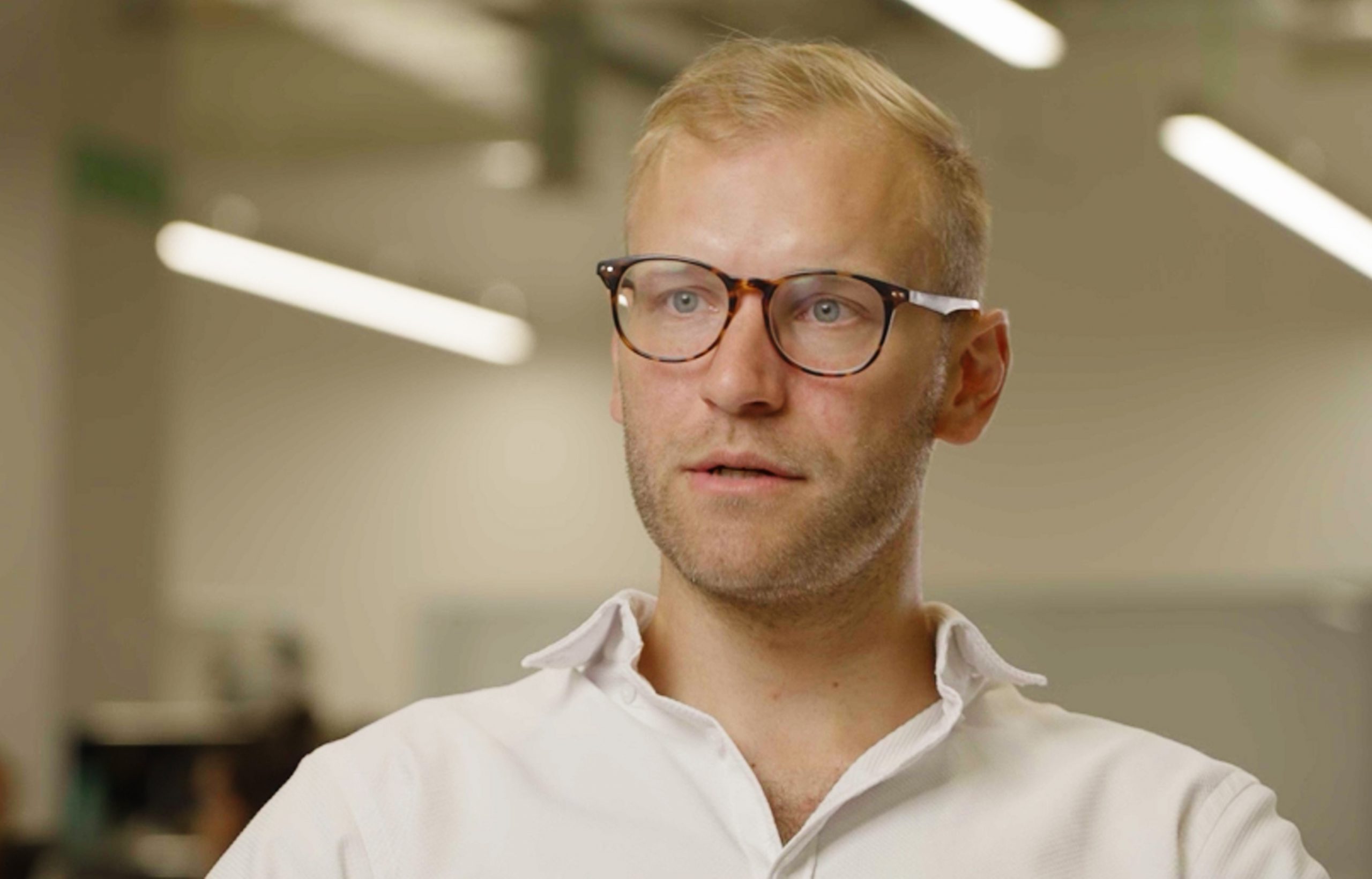
What are the benefits you saw in project delivery?
Stephan: Productive really helped us and I would recommend it to anyone who is interested and who runs projects because it helps you to be more efficient. And that also comes down to the monetary aspects where, you say, you save money in the end of the day and you save your time. You make your life more easy, your work more easy. And that is a great benefit from Productive.
Ana: You can also do a follow up of the whole project, in line with the use of resources you have budgeted, you can quantify any type of deviation that happens, I wouldn’t say in real time, but you can see it day-to-day. All of this lets you make decisions faster and change the course of the project. For me, these are all qualities to highlight in Productive, because they contribute to make your business better.
Any final thoughts to conclude?
Verónica F., PMO: The good thing about the tool is that having everything integrated in the same platform gives us a 360 view of how the company is performing regarding resources, efficiency, profitability. It helps the managers to self-manage, and allows us to have an immediate view of our resources, the project timing…
Achieve Your Agency’s True Potential
Switch from multiple tools and spreadsheets to one scalable agency management system.



